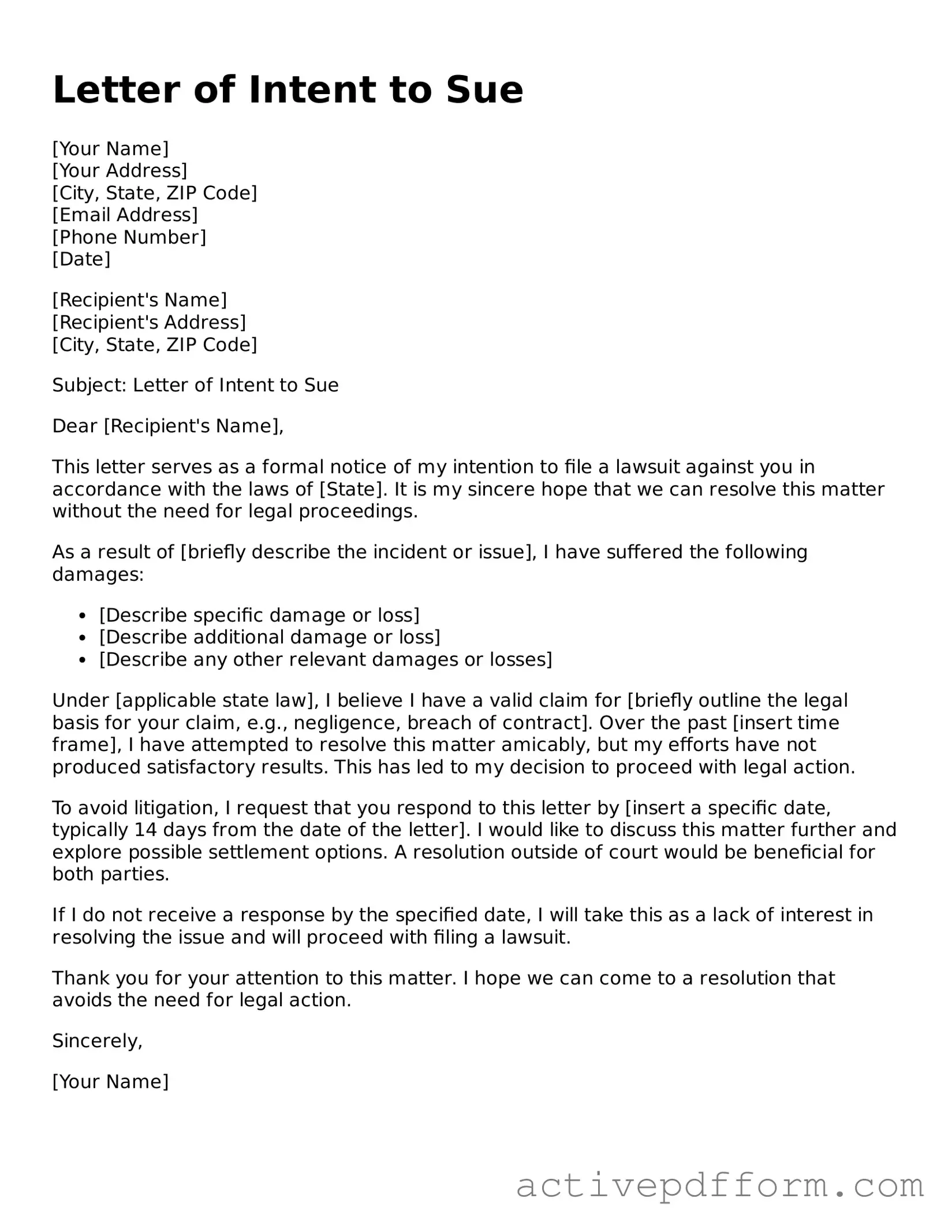What is a Letter of Intent to Sue?
A Letter of Intent to Sue is a formal document that notifies another party of your intention to file a lawsuit against them. It serves as a warning and provides the recipient an opportunity to address the issue before legal action is taken. This letter outlines the reasons for the intended lawsuit and the damages being sought.
When should I send a Letter of Intent to Sue?
You should consider sending this letter when you have a legitimate claim against someone and have made attempts to resolve the matter informally. It is often a good first step before proceeding with a lawsuit, as it demonstrates your seriousness and may encourage the other party to negotiate or settle the issue.
What should be included in the Letter of Intent to Sue?
Your letter should include key details such as your name and contact information, the recipient’s name and contact information, a clear statement of the issue, a description of the damages you are claiming, and a deadline by which you expect a response. Additionally, it’s helpful to mention any previous attempts to resolve the matter.
Do I need a lawyer to write a Letter of Intent to Sue?
While you can write a Letter of Intent to Sue on your own, consulting with a lawyer is advisable. A legal expert can help ensure that your letter is appropriately worded and covers all necessary points, which can strengthen your position should the matter escalate to a lawsuit.
What happens after I send the Letter of Intent to Sue?
Once the letter is sent, the recipient has the opportunity to respond. They may choose to negotiate a settlement, dispute your claims, or take no action at all. If they do not respond or if negotiations fail, you may proceed with filing a lawsuit.
Is a Letter of Intent to Sue legally binding?
No, a Letter of Intent to Sue is not legally binding. It is a preliminary step that indicates your intention to take legal action. However, it can be an important document in establishing that you attempted to resolve the issue before resorting to litigation.
Can I use a Letter of Intent to Sue in court?
While the letter itself is not admissible as evidence in court, it can demonstrate that you acted in good faith to resolve the issue before filing a lawsuit. This can be beneficial if the case goes to court, as it shows that you tried to settle the matter amicably.
How long should I wait for a response after sending the letter?
It’s reasonable to wait about 14 to 30 days for a response. The specific time frame can depend on the nature of the dispute and the complexity of the issues involved. If you do not receive a response within that time, you may consider your next steps, which could include pursuing legal action.
What if I change my mind after sending the Letter of Intent to Sue?
If you decide not to proceed with the lawsuit after sending the letter, you can simply inform the recipient of your decision. It’s a good practice to communicate clearly, as it helps maintain professionalism and may keep the door open for future negotiations.
